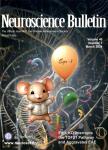Single-Cell Mapping of Brain Myeloid Cell Subsets Reveals Key Transcriptomic Changes Favoring Neuroplasticity after Ischemic Stroke
作者机构:Department of Neurology.The First Affiliated Hospital of China Medical UniversityShenyang 110001China Department of NeurologyThe Third Affiliated Hospital of Sun Yat-sen UniversityGuangzhou 510630China Stroke CenterThe First Affiliated Hospital of China Medical UniversityShenyang 110001China
出 版 物:《Neuroscience Bulletin》 (神经科学通报(英文版))
年 卷 期:2024年第40卷第1期
页 面:65-78页
核心收录:
学科分类:1002[医学-临床医学] 100204[医学-神经病学] 10[医学]
基 金:supported by the National Natural Science Foundation of China(82071467) the International(Regional)Cooperation and Exchange Program of the National Natural Science Foundation of China(82111330075) the National Natural Science Foundation for Youth Scholars of China(81801053) the Innovation Team Support Plan of Universities in Liaoning Province(LT2019015) the Liaoning Provincial Key Research and Development Guidance Program(2019JH8/10300002) the Liaoning Revitalization Talents Plan(XLYC1802097)
主 题:Ischemic stroke Monocyte-derived macrophage Microglia Neurogenesis Single-cell sequencing
摘 要:Interactions between brain-resident and periph-eral infiltrated immune cells are thought to contribute to neuroplasticity after cerebral ***,con-ventional bulk sequencing makes it challenging to depict this complex immune *** single-cell RNA sequencing,we mapped compositional and transcriptional features of peri-infarct immune *** were the predominant cell type in the peri-infarct region,displaying a more diverse activation pattern than the typical pro-and anti-inflammatory state,with axon tract-associated micro-glia(ATMs)being associated with neuronal *** inference suggested that infiltrated monocyte-derived macrophages(MDMs)exhibited a gradual fate trajectory transition to activated ***-cellular crosstalk between MDMs and microglia orchestrated anti-inflammatory and repair-promoting microglia phenotypes and promoted post-stroke neurogenesis,with SOX2 and related Akt/CREB signaling as the underlying *** description of the brain s immune landscape and its relationship with neurogenesis provides new insight into promoting neural repair by regulating neuroinflammatory responses.



